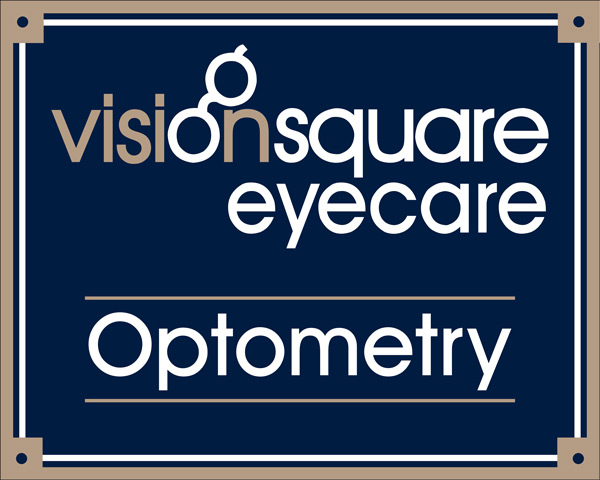August is Vision & Learning Month. The goal of Vision & Learning Month is to increase awareness among parents and teachers about the prevalence of undiagnosed or misdiagnosed vision problems. Vision problems can often present as learning challenges, and should be top-of-mind when parents or teachers see a child struggling in the classroom.
One often undiagnosed vision challenge is Computer Vision Syndrome, also called digital eye strain, and it’s becoming more and more common.
If there’s one thing we’ve all done in excess this past year, it’s staring into screens more often and for longer amounts of time. Staring at your phone, tablet, e-reader or computer screen for work, school or personal Zoom meetings takes a toll on your eyes. That’s because the human eye wasn’t meant to stare at any object 12 to 24 inches from our eyes for hours at a time.
So much screen-gazing can result in a group of eye and vision-related issues known as Computer Vision Syndrome or digital eye strain.
What is Computer Vision Syndrome?
If you’ve experienced eye discomfort or vision issues after viewing your screen for lengthy periods—including headaches, eyestrain, dry eye, blurred vision, redness, or neck and shoulder pain—you’ve likely had a bout of digital eye strain. And, if your symptoms get worse the longer you’re staring into a screen, you’ve almost certainly experience this uncomfortable condition.
What causes Computer Vision Syndrome?
While the time you spend staring into screens is a significant factor, there are a few other conditions that contribute to digital eye strain:
- Poor lighting
- Screen glare from your digital screen
- Ergonomics: not viewing screens from the proper distance
- Poor neck or sitting posture
- Uncorrected vision problems
- A combination of some or all of the above
Time on screens is a major factor in computer vision syndrome, but your individual visual ability can compound that. If you are farsighted, have astigmatism, have difficulty focusing, or if you’re over 40 and have or are developing presbyopia—those conditions all contribute to how your eyes respond when staring at digital devices.
Why are screens harder to read than books?
Printed books feature letters and figures in dense, black print with crisp borders against the strong contrast of the page they’re printed on. However, a computer screen doesn’t offer that same level of contrast or sharp edges—so, your eyes have to work harder to focus and read them effectively. Screens also emit glare and reflections, which makes the challenge for your eyes even more complex.
In short: Screen time makes your eyes work harder, and in a way human evolution hasn’t yet addressed.
How is Computer Vision Syndrome treated?
While taking a break from screens is a great start, for some people, that’s not enough to solve the visual and physical symptoms of digital eye strain. A visit to your eye doctor for a comprehensive eye examination is the ultimate best way to address the headaches or blurred vision resulting from computer vision syndrome. If you don’t address it, your vision problems may continue to worsen. So what can you do? Give your eyes some help with the following recommendations:
- Computer glasses made specifically for use while you’re working at your computer or other screen are a smart way to address computer vision syndrome. Even people who don’t wear prescription glasses or contact lenses may benefit from a pair of glasses made to address the specific visual demands of your eyes when viewing screens. These glasses may have special lenses and coatings to help you see your best on the computer or other digital screen. Our goal is for you to achieve comfortable, unstrained vision in all settings—whether that’s in the classroom, at work, on the computer, driving, reading or playing sports.
- Your computer set-up is another significant factor. The distance from the screen to your eyes should be about 24 inches—that’s two feet! And when looking at the screen, your gaze should be positioned slightly downward, meaning that the center of the screen should be about 5 inches lower than your eyes. Minimize bright overhead light and opt for a desk lamp instead, and make sure any windows are to the side to minimize glare. Finally, increase the contrast of your screen to a comfortable level to reduce the strain on your eyes.
- Finally, practice The 20-20-20 Rule: Every 20 minutes, look away from your screen and gaze at something 20 feet away for at least 20 seconds. And don’t forget to blink! Taking frequent breaks can help rest your eyes and minimize the effects of digital eye strain from screen use.
If you suspect you or your student may have computer vision syndrome symptoms, make an appointment with your optometrist for an eye exam as soon as possible. We will conduct a comprehensive exam and ask about your symptoms, test your visual acuity and determine the ideal lens power to address your unique situation. Call us today!
With proper vision correction and attention to your screen-viewing behaviors and habits, you can give your eyes the tools they need to see comfortably and clearly again.

